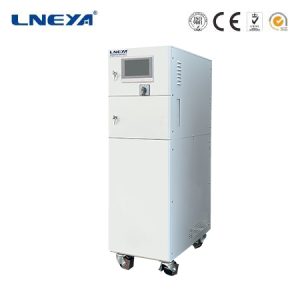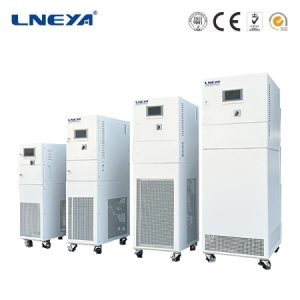Chilled Glycol Systems: Expanding the Limits of Industrial Cooling
Chilled glycol systems are a type of industrial refrigeration system that incorporates glycol, an alcohol compound, mixed with water to lower the freezing point of the coolant. These systems are designed to provide precise temperature control in various applications where rapid cooling or low-temperature operation is required.

How Chilled Glycol Systems Work
Chilled glycol systems operate by circulating a glycol-water mixture through a heat exchanger or cooling jacket, absorbing heat from the process or equipment. The refrigerant in the chiller absorbs thermal energy from the glycol mixture, which is then condensed back into a cooler state to continue the cycle.
Advantages of Chilled Glycol Systems
Lower Freezing Point: The glycol mixture has a much lower freezing point than pure water, making it suitable for low-temperature applications.
Heat Transfer Efficiency: While glycol has a lower heat capacity than water, the larger temperature difference allows for rapid heat removal.
Corrosion and Bacterial Growth Inhibition: Certain types of glycol help prevent corrosion and bacterial growth in the system.
Types of Glycol Used
Ethylene Glycol (EG): Offers freeze protection and corrosion inhibition but is toxic and not suitable for food processing applications.

Propylene Glycol (PG): Non-toxic and biodegradable, making it safe for use in food and beverage industries.
Applications of Chilled Glycol Systems
Food and Beverage Processing: For rapid cooling of products, maintaining process temperatures, and product storage.
Chemical Processing: To maintain reaction stability by providing precise temperature control.
Pharmaceutical Formulation: For cooling during various stages of production.
Ice Rinks: To maintain the temperature of the ice surface.
Selecting the Right Chilled Glycol System
When choosing a chilled glycol system, consider the following:

Cooling Capacity: Ensure the system can meet the required cooling demand.
Type of Glycol: Choose based on the specific application and safety requirements.
Mixture Ratio: Calculate the proper ratio of glycol to water based on the lowest operating temperature.
Conclusion
Chilled glycol systems offer a versatile and efficient cooling solution for a wide range of industrial applications. Their ability to maintain low temperatures and rapid heat transfer makes them invaluable in various industries. By understanding the principles of operation, advantages, and selection criteria, users can optimize their cooling processes for improved performance and reliability.
This article provides a comprehensive overview of chilled glycol systems, discussing their working principles, advantages, types of glycol, applications, and selection guidelines. It emphasizes the importance of using the correct glycol type and mixture ratio for optimal system performance and efficiency.
 LNEYA
LNEYA
 简体中文
简体中文

















































































